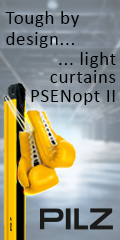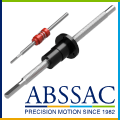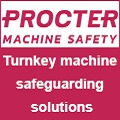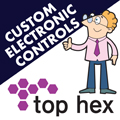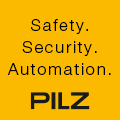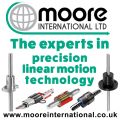
Posted to News on 25th Jul 2008, 21:04
The benefits of combining functions in automation products
Robert Brooks, Product Marketing Manager for Motion and Drives at Omron Electronics Limited, looks at the trend to bring product functionality together into multi-functional devices.
Machine builders are under constant pressure to do more with less - reductions are sought in panel space as well as price, but at the same time machine builders must improve the functionality and efficiency of the machines they build. Automotive customers in particular are demanding quick and simple installation, network integration, greatly reduced wiring and easy troubleshooting. For those responsible for designing and building machines, dealing with this constant pressure is a dilemma that must be grappled with every day.
For industrial automation vendors such as Omron, one answer to this scenario has been 'product blending' - combining or connecting two or more core products into one device. An early example of connecting multiple devices together to increase machine functionality and reduce cost was seen in Fieldbus communications. Typically an inverter would be connected to a controller via separate wires, but the wiring between the units becomes the weakest link. Omron's approach is to offer a range of communication option boards that are designed to be built into the inverter, allowing the machine builder to choose a communication option board based on their technical expertise and commercial focus, rather than being restricted to a single protocol.
A more radical addition has been the combination of PLCs into products such as inverter drives, or even incorporating PLCs within HMIs, thereby eliminating the need for separate connections between the devices and saving panel space. With an inverter drive, the PLC can be used for tasks such as monitoring energy consumption or the drive's status. Furthermore, programs can be selected via an optionally connected HMI that can be tailored to specific applications; changing the settings to suit the demands of the application provides flexibility that is greatly in demand in the automotive industry.
Inverter with integral safety functions
It is interesting to analyse the design process of the major automation manufacturers, who are deciding to combine new functionality into devices such as inverters. Omron-Yaskawa, for example, has recently launched the V1000 inverter drive. Designing a new inverter from scratch means you have the ability to build in functionality more easily. Omron-Yaskawa decided to embed safety functionality into the V1000. The company believes it makes sense to incorporate safety functionality into the inverter drive itself, as it provides clear benefits to the user in terms of simplified wiring and installation costs, simplified circuit layout and improved reaction times. For many industry sectors, integrating functionality is becoming increasingly important, especially with safety, where it is being built into applications rather than added separately.
The V1000 incorporates dual safety inputs that are certified to EN 954-1 Safety Category 3 and EN 60204-1 Stop Category 0, which, depending upon circumstances, may eliminate the need for a separate externally mounted contactor. The safety inputs ensure that the motor is quickly disconnected when a fault occurs. The inclusion of safety inputs in Omron's inverter and servo products is a direct response to customer requests. The company believes that in the future many more manufacturers will embed safety functionality into their products as the trend takes hold.
It is also becoming increasingly important for products to be engineered to meet particular application demands through the use of dedicated firmware. Omron calls this CASE firmware and already offers many firmware variants for its ranges of drives including position control, electronic line shaft synchronisation, winder control and pump sequencing - all realised using dedicated functionality that the user has to hand.
Omron's belief is that automation manufacturers will continue to introduce products that can be tailored to suit the exact needs of an application. Key trends will be the incorporation of PLCs within HMIs, a focus on the delivery of safety and other dedicated functionality, as well as making a host of communications options available.
In summary, combining numerous, previously separate, products is proving more cost-effective and easier to install and maintain. End users and machine builders alike also find it a more logical approach than connecting and deploying separate devices. The trend is also a positive one in terms of maximising the use of products such as drives - ensuring a reduction in the total cost of ownership as well as more rapid return on investment.
For more information, visit www.industrial.omron.co.uk.



